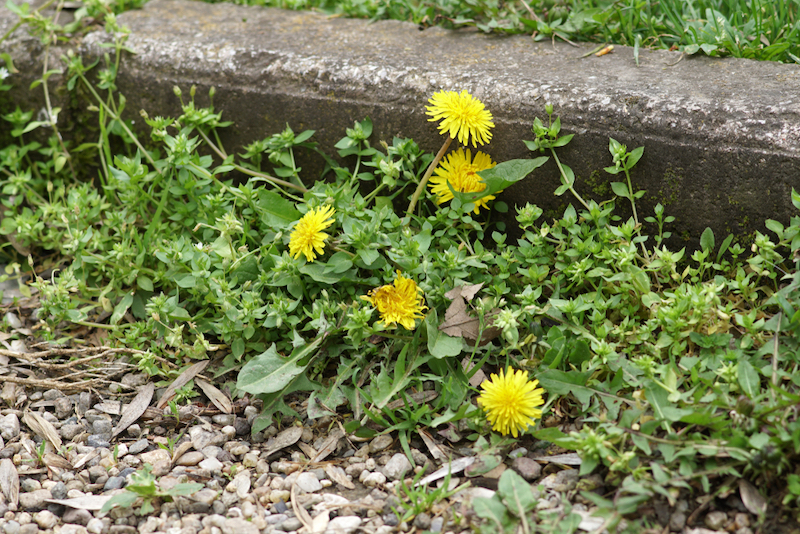There are few things in life more annoying than pesky weeds invading your yard and garden. This post provides methods for dealing with invasive nutgrass that actually work.
Getting Rid of Nutgrass
Q: How do we get rid of nutgrass? We tried the vinegar sprays and a store-bought herbicide. We have also tried digging it out, but nothing seems to work. When we think we have it under control, it comes back in a few weeks as bad as it was in the beginning. What works?
A: Nutgrass is a sedge. Sedges are wetland plants. They love constantly wet soil and are often found in overwatered lawns with poor drainage. If the lawn grass is mowed too low, that helps the sedge, too. So, raise the mower height and cut back on watering.
However, just to make sure the problem plant is a sedge, cut the stem and look at the end. If it is triangular, it is a sedge. If it is round, it is a grassy weed. Sedges have underground roots, stems and tubers. All three are capable of respouting if the top is pulled off. They also spread through seeds.
The best attack method is trying several things at once and keeping that up until it is gone. Don't let any of the sedge go to seed, and use a pre-emergent weedkiller in the fall and spring to prevent the seeds from sprouting. Even if you have killed the existing plants, the seeds can sprout and replant the whole area again for the next few years.
Pull the plants and runners out wherever it is easy to do so, such as in flower beds with loose soil and mulch. Use a spray that says “nutgrass” or “nut sedge” on the label, and follow the directions for lawn and groundcover areas. Look for ingredients like sulfentrazone or halosulfuron-methyl. Don't overdose the herbicide at any one time, or you may injure the grass. Steady, slow progress is better than trying for a quick kill. Weakened lawns can allow more weed growth, so keep up with fertilizing and watering the lawn.
Many weeds will come back in a weakened state after a weed treatment, but nut sedge has larger stores of food in the tubers, so it can recover quickly. You have to keep treating it until the mature plants are dead, and then you have to prevent the seeds from establishing a new population.
Q: I have a small pond and have heard about some type of fish that eats mosquito larvae. Do you know what kind it is?
A: Koi and goldfish, the normal backyard pond fish, will eat all insect larvae they can find and eliminate any mosquitoes in the pond. If you live in a warm climate and want to try tropical fish from the pet store, many of them will also eat any live food that arrives.
You are probably referring to a fish similar to a guppy called by its generic name of Gambusia. They are also called mosquito fish, and they are added to ponds and pools to eat the larvae. They should not be used where they could escape into natural areas in warm climate. They die off if the area is too cold or dries out occasionally.
Gambusia are more effective in certain situations than others. They generally work quite well in unused swimming pools, abandoned sewage lagoons, mine pits and permanently flooded stormwater facilities. Other mosquito larvae habitats that do not consistently provide a suitable site for Gambusia stocking could, at times, exhibit the proper characteristics for stocking to occur. These sites include freshwater swamps, ditches and woodland pools. A small backyard pond could support 30 to 50 Gambusia.
Save or share this infographic for reference: Getting Rid of Nutgrass

Email questions to Jeff Rugg at [email protected]. To find out more about Jeff Rugg and read features by other Creators Syndicate writers and cartoonists, visit the Creators Syndicate website at www.creators.com.
COPYRIGHT 2017 JEFF RUGG
DISTRIBUTED BY CREATORS SYNDICATE



